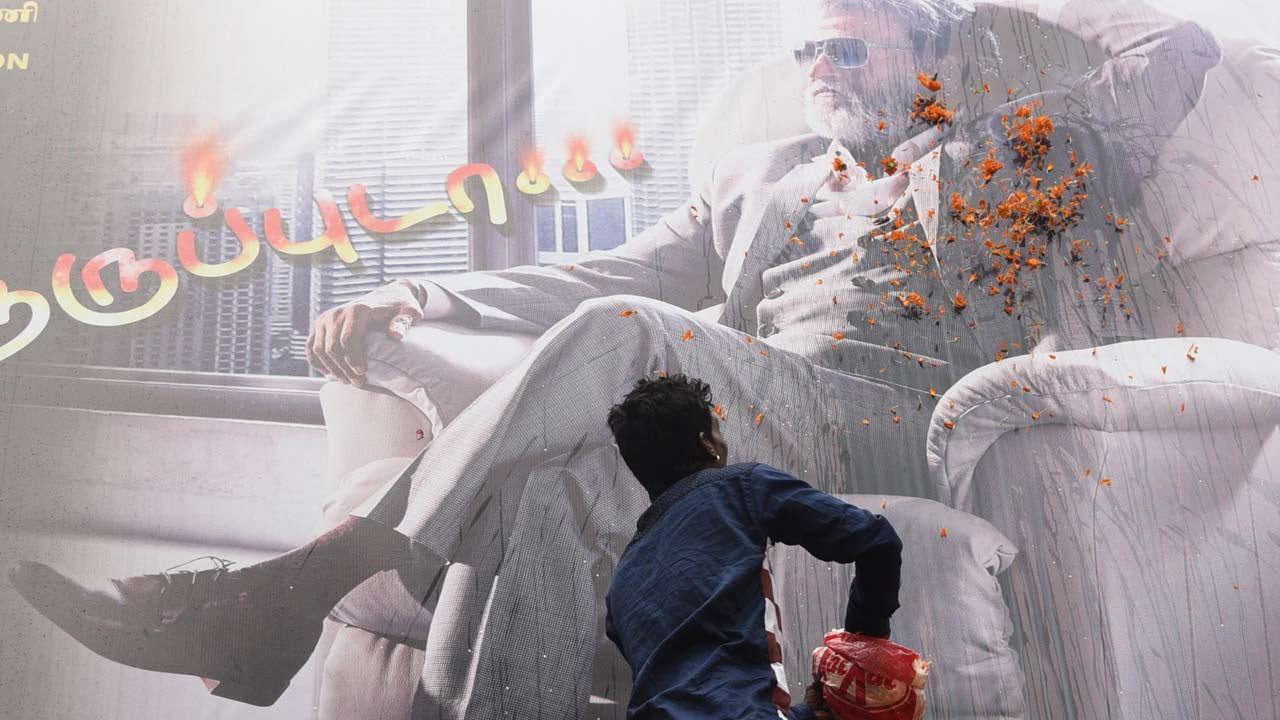Scanning the banter around Bollywood flops to realise how quick we’re with writing obituaries

A Rajinikanth fan celebrates the release of his movie Kabali at Aurora Theatre, in King’s Circle, Mumbai
 What good is a theory if you instantly agree with it? And so I summarily dismissed one by a Bollywood insider around mid 2020 , when news channels, and consequently desi social media, were going nuts, accusing the entire, mainstream Bombay film industry of essentially being a bunch of drug-addled louts, spreading a nonsensical, non-sanskari culture.
What good is a theory if you instantly agree with it? And so I summarily dismissed one by a Bollywood insider around mid 2020 , when news channels, and consequently desi social media, were going nuts, accusing the entire, mainstream Bombay film industry of essentially being a bunch of drug-addled louts, spreading a nonsensical, non-sanskari culture.
ADVERTISEMENT
Most of those being disparaged, without reason, were really hardworking artistes/entrepreneurs, from across India, in a cosmopolitan Bombay. Who, over generations, had dedicated themselves to creatively entertain people—no less, no more. I’m talking of the noise around the time of star-actor Sushant Singh Rajput’s death.
Some of this unusual, blanket hate had naturally percolated among regular public as well—who began to see Bollywood stars, etc, as hardly folks to look up to.
This is because, the insider told me, there were no theatres for the public to really look up to them. Implying the previous irrational love itself, had everything to do with the size of the screen those stars appeared in anyway.
The theatres were the first to shut and the last to reopen during the pandemic—across most Hindi speaking states; in the home of Bollywood, that is Maharashtra, in particular.
Not as much the case with, say, Tamil and Telugu cinemas, that delivered major local hits (Master, Sulthan, Uppena, Vakeel Saab) even between the pandemic’s first and second wave. Here’s what’s uncontested about regular, mainstream Tamil-Telugu film industries, regardless. That they barely have to draw in masses for new releases, in the same way that Bollywood does.
The male hero is the North Star. The public goes to theatres—because it’s there! The heroine can be easily from Bollywood—so the cross-pollination has always existed. Even if the films are often more unabashed about kitsch, with a debatable touch of old-world sexism, and a world-creation inherently quite separate from the world itself.
Also, Tamil and Telugu single screens, in particular, have coexisted with multiplexes. Unlike in many Hindi speaking states. Although what became clear, over time, is that universal audiences in desi, expensive multiplexes were, by and large, no different from those at cheaper, standalone cinemas. Flocking towards experiential entertainment; and movies from anywhere, Hollywood more so, being the global unifier.
And yet in Bollywood, before the pandemic struck, a series of medium budget movies kept doing hugely well in theatres for people to go: ‘content is king’, ‘script is god’, etc. Over two years after, theatres opened to full capacity nationwide—bunch of Hindi films bombed, and everywhere I go, I only hear: ‘Bollywood is screwed, what’ll they make?’
That ‘OTT is the new multiplex’. Does look like it, when you step into the 2022 slate announcement party of merely one such OTT platform (Amazon Prime Video). All you see around is actually top-line Bollywood producers (Karan Johar, Rohit Shetty, others) offering their talents for its annual harvest (of 41 films plus shows). Something that would’ve been natural ground for the TV industry, given it is home entertainment, after all. Only the benchmarking/budgeting is film. And that’s where Bollywood is.
What about cinemas? Most loudly, you hear, there is invasion from the South going on in Hindi markets—and that the “South guys” understand desi audiences better. Why? Because three films cracked it back-to-back, creating such a thing as a ‘pan Indian film’. As if Hindi films haven’t gone pan-India, before the pandemic.
What do Bollywood’s traditional distribution circuits/territories, ‘Mysore’ (Bengaluru, parts of Karnataka), ‘Nizam’ (including Telangana, parts of Karnataka), Andhra, Tamil Nadu signify, if not a pan-India release.
Equally, calling two films in Telugu (Baahubali director’s RRR, Allu Arjun starrer Pushpa), and another in Kannada (sequel of the hit KGF), as ‘South’, is like deeming everyone from below the Vindhyas, ‘Madrasi’—a popular slang that I suspect originates from Madras Presidency/Province, that included most of southern India during British rule.
Only that a Malayalam movie is probably as different from a typical Telugu film as so-called ‘Bollywood’ is from art-house Iranian cinema. Malayalam movies found universal critical acclaim and film-buff appeal through OTT platforms, chiefly during the pandemic.
Likewise, theatre owner Akshaye Rathi (from Nagpur), during a panel discussion I just had to participate in, says Telugu cinema from Andhra/Telangana—that also border Maharashtra, Odisha, Chhattisgarh—found specific cultural resonance through cable/satellite television over the past decade.
So what’s changed for everyone to go ‘Bollywood is screwed’? Nothing, says G Dhananjayan, multi-lingual producer from Chennai, in the same discussion. Making me think of this phase as two years of Ramzan, ending with people starved of big-screen entertainment—simply desperate for something seriously larger than life to break their fast with.
“The films, Pushpa, RRR, KGF2, had been held back from release. The theatres opened, and people rushed in. Bollywood had nothing of the same scale to offer. If you look at Telugu cinema’s slate for the whole of next year, there is nothing in it [that will repeat the success either].”
The only thing he worries about with cinemas from India merging across theatres/multiplexes—and thankfully creating more blockbuster choices for the programmer—is remakes. Dhananjayan says he has bought rights of four such films, “Bollywood has around 20-25 remakes lined up.” Those might go kaput; of course, Hindi movies of all kinds, won’t. Can’t!
Mayank Shekhar attempts to make sense of mass culture. He tweets @mayankw14
Send your feedback to mailbag@mid-day.com
The views expressed in this column are the individual’s and don’t represent those of the paper.
 Subscribe today by clicking the link and stay updated with the latest news!" Click here!
Subscribe today by clicking the link and stay updated with the latest news!" Click here!







